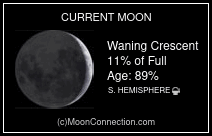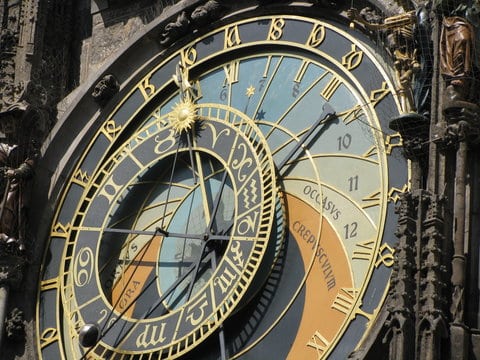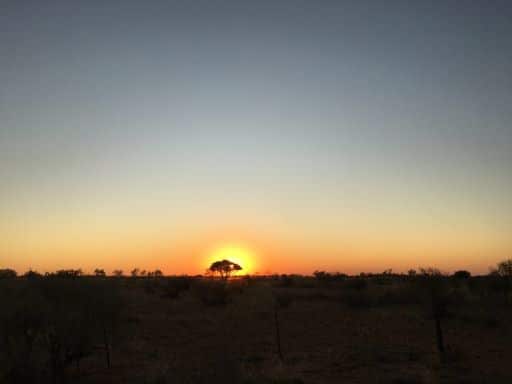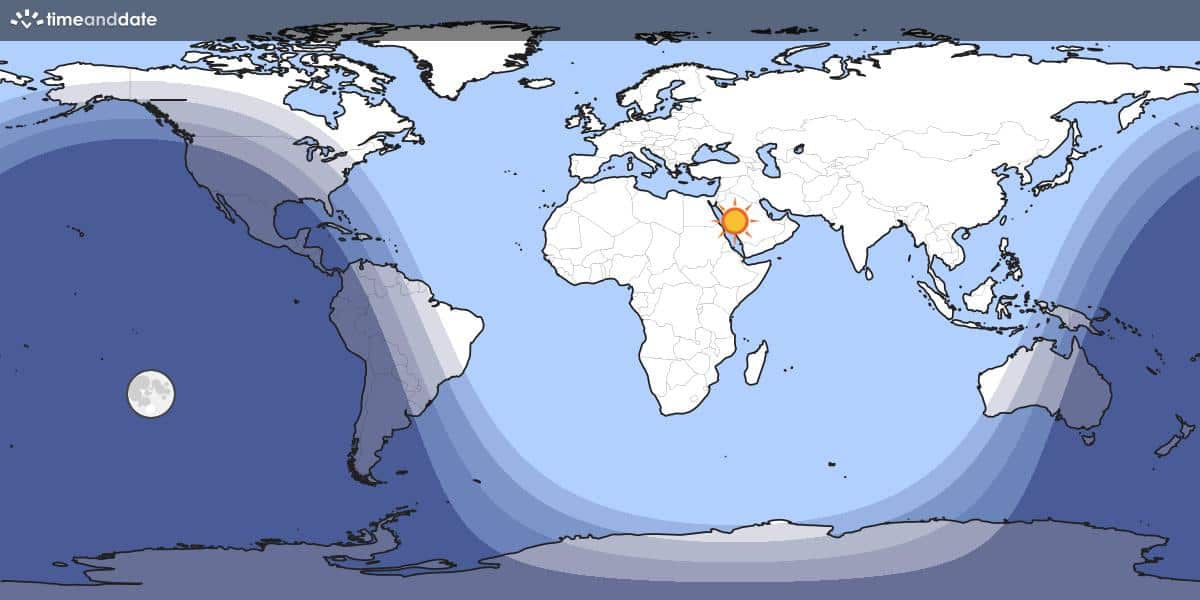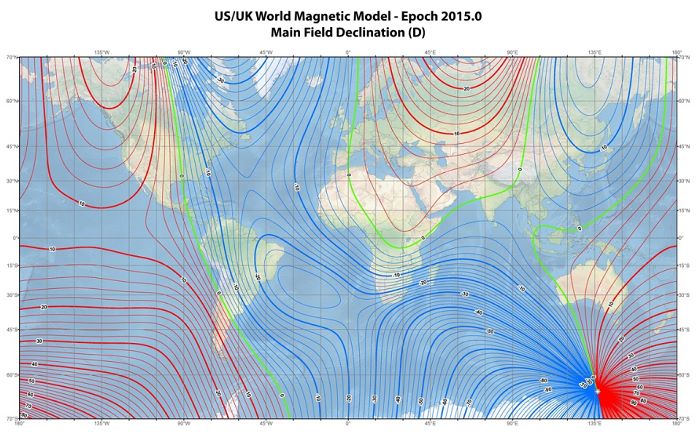Bar – Chart 8
Steve Gottlieb’s Observations
NGC 1950 = ESO 056-116 = S-L 450
05 24 33.0 -69 54 04; Men
V = 13.2; Size 1.7′
24″ (4/7/08 – Magellan Observatory, Australia): this is the first in a group of clusters including NGC 1958, 1959, 1969, 1971, 1972 and 1986, towards the SE end. These clusters reside in a dense part of the LMC bar with a bright background glow. NGC 1950 forms the southwest vertex of a triangle with NGC 1959 5.5′ ESE and NGC 1958 6.3′ NE. At 260x it appeared moderately bright, fairly large, ~2′ diameter, with a relatively low surface brightness. At 346x, several extremely faint stars peppered the face of the cluster. A mag 11 star lies 3′ E, within the triangle described above.
Notes: James Dunlop discovered NGC 1950 = D 92 = D 94 = h2859 on 24 Sep 1826. He noted “two very faint nebula, 25″ diameter, ill defined”. His poorly reduced position was 20′ too far southeast, but in the drift he recorded it 2.0 minutes after NGC 1943 and 17′ N, a perfect match. He also recorded it 3 nights later after NGC 1943 in the drift and called it “an extremely faint, ill defined small nebula”.
John Herschel rediscovered NGC 1950 on 23 Dec 1834 (sweep 523). He recorded “The first of several nebulae running together [along with 1958, 1959, 1969, 1971 and NGC 1972] and forming a very remarkable group, which fills the field with a faint diffused nebulosity. See plate IV, figure 7.” On 12 Nov 1836 (sweep 751), he noted “A large ill-defined patch at the lower edge of the Nubecula Major, which is pretty definite here, and very bright.”
S-L 460 = OGLE-CL LMC 456
05 25 28 -69 46 39; Dor
Size 0.8′
25″ (10/17/17 – OzSky): at 397x; fairly faint, fairly small, round, 30″ diameter, even surface brightness. This LMC cluster is located 3.5′ N of NGC 1958.
Notes: Albert Le Sueur discovered S-L 460, along with S-L 469, on 26 Feb 1870 while he was reexamining the field depicted on John Herschel’s plate I, figure 7 in his Cape catalogue. I found Le Sueur’s sketch (with south up) on the National Archives of Australia website, which also includes nearby NGC 1958, 1969, 1971 and 1972 (none labeled). Joseph Turner also observed the field on 21 Dec 1875. His sketch was reproduced on plate III, figure 29 of “Observations of the Southern Nebulae made with the Great Melbourne Telescope from 1869 to 1885”, though he misidentified S-L 460 as GC 1156 [= NGC 1950] and S-L 469 as GC 1164 [= NGC 1959].
Finally, Pietro Baracchi also observed and sketched the field on 10 Nov 1884 and called S-L 460 (labeled “a”) “faintest of group, very faint and small” and S-L 469 (labeled “c”) as “faint, small, only a little brighter than d [NGC 1969], round.” Although he adopted Turner’s identifications, he noted that object “a, b [NGC 1958] and c are in a different position altogether from that shown by Herschel.”
NGC 1958 = ESO 056-119 = S-L 462
05 25 30.7 -69 50 10; Dor
V = 13.0; Size 1.5′
25″ (10/17/17 – OzSky): at 397x; this LMC cluster was very bright, moderately large, round, 1′ diameter. A few extremely faint stars were resolved at the edge with a non-stellar knot or small clump of stars at the west end. A mag 12 star is 1′ NW. Seven clusters lies within 7′ of NGC 1958 including NGC 1969, 1971 and 1972, a close trio ~6′ E and faint NGC 1950 and 1959, situated 6.5′ SW and 5.5′ S, respectively. S-L 460 is 3.5′ N and S-L 469 lies 5.5′ NNE.
24″ (4/7/08 – Magellan Observatory, Australia): at 260x, this LMC cluster appeared bright, fairly small, round, 45″ diameter. Increasing the magnification to 346x, the cluster resolved into a couple of dozen very faint, densely packed stars. The 1′ halo appeared irregular and mottled as if more stars were just below resolution.
This cluster is situated in a rich section of the central bar and a number of clusters are nearby. NGC 1958 forms the northern vertex of an isosceles triangle with NGC 1959 5.5′ S and NGC 1950 6.3′ SW. A single brighter mag 11 star sits within this triangle at the vertex of another isosceles triangle with NGC 1959 and NGC 1950. A trio of clusters, NGC 1969, 1971 and 1972, lies 5′ to 6′ E.
Notes: James Dunlop discovered NGC 1958 = D 93 = h2864 on 24 Sep 1826. It was logged as “a ill defined nebula, irregular figure, 30″ diameter.” His position is 10′ SE and closer to NGC 1986, but reference to his handwritten drift record shows it was seen between D 92 = NGC 1950 and NGC 1971 and his offsets in time and declination match both objects. It’s possible it was also seen in a similar drift 3 nights later.
John Herschel rediscovered NGC 1958 on 23 Dec 1834 (sweep 523) and commented “The second of the group (fig 7, Pl IV); L; F; very gradually brighter middle.” On 11 Nov. 1836 (sweep 748), he noted “F; R; gradually brighter in the middle, 40”.
Albert Le Sueur sketched the field on 26 Feb 1870 with the Great Melbourne Telescope. The sketch clearly shows S-L 460 and 469. Joseph Turner’s sketch from 21 Dec 1875 was published on plate III, figure 29 in “Observations of Southern Nebulae…”, though he misidentified S-L 460 and 469 as previous discoveries by Herschel (NGC 1950 and 1959).
NGC 1959 = ESO 056-120 = S-L 466
05 25 35.7 -69 55 36; Men
V = 12.2; Size 1.6′
24″ (4/7/08 – Magellan Observatory, Australia): this globular is at the southeast corner of a triangle of clusters with NGC 1958 5.5′ NNW and NGC 1950 6′ WNW. It appears similar to NGC 1950 — a moderately bright, fairly large glow of ~2′ but with a relatively low surface brightness. Appears slightly smaller than NGC 1958. At 346x, a few faint stars are resolved around the edges. Located along the southeast side of the LMC bar, so the background is bright.
Notes: John Herschel discovered NGC 1959 = h2865 on 23 Dec 1834 and recorded “F; vL; very gradually brighter middle; the third of several whose borders join, forming the group in figure 7, pl IV.” His position is fairly accurate.
S-L 469 = OGLE-CL LMC 467
05 25 57 -69 45 04; Dor
Size 0.7′
25″ (10/17/17 – OzSky): at 397x; fairly faint, fairly small, irregular, 30″ diameter. S-L 469 is the slightly brighter of a pair with S-L 460 3′ SW. Located 5.6′ NE of NGC 1958 and 6′ NW of NGC 1969 (first in a trio with NGC 1971 and 1972).
Notes: Albert Le Sueur discovered S-L 469, along with S-L 460 on 21 Nov 1875 with the Great Melbourne Telescope. See S-L 460 for historical observations.
NGC 1971 = ESO 056-128 = S-L 481 = BRHT 12a
05 26 45.6 -69 51 03; Dor
V = 11.9; Size 1.1’x0.95′
25″ (10/17/17 – OzSky): at 397x; very bright, fairly small, round, 30″-35″ diameter, high surface brightness. NGC 1971 is the brightest in a small trio with NGC 1972 50″ NNE and NGC 1969 1.3′ NW. These clusters are situated in a glowing region (star cloud LH 59) on the southeast side of the central bar of the LMC with NGC 1958 6.5′ WNW and S-L 469 7′ NW.
24″ (4/7/08 – Magellan Observatory, Australia): this cluster is the furthest south in a small right triangle of clusters with NGC 1969 1.2′ NW and NGC 1972 0.9′ NNE. At 260x, it appeared bright, fairly small, round, 45″ diameter (largest of trio), gradually increases to the center. At 350x, it contains a sharp stellar core or a mag 14 star is superimposed and a star is also on the SE edge. Located 15′ SW of a mag 6.1 star (close double) within the southeast side of the LMC’s central bar.
Notes: James Dunlop probably discovered NGC 1971 = D 95 = h2875 on 24 Sep 1826. He described D 95 as “a faint nebula, round, 35″ or 40″ diameter.” In the drift it was logged between NGC 1958 and NGC 1986 and his offset in time and declination from NGC 1986 lands with 2′ of NGC 1971. It was apparently also recorded in his drift through the same area three nights later and called “very faint, ill defined, 20″ diameter.”
John Herschel rediscovered this cluster on 23 Dec 1834 (sweep 523) and recorded, “the 5th of several running together (fig 7, Pl IV); attached to a smaller, No. 4”. His position is accurate.
Albert Le Sueur sketched the field (with NGC 1958, 1969, 1972, S-L 460 and S-L 469) on 25 Feb 1870, as well as by Joseph Turner on 21 Dec 1875 using the 48″ Great Melbourne Telescope. Turner’s sketch is on plate III, figure 29 in “Observations of Southern Nebulae…”
NGC 1972 = ESO 056-129 = S-L 480 = BRHT 12b
05 26 48.8 -69 50 17; Dor
V = 12.6; Size 0.9’x0.8′
25″ (10/17/17 – OzSky): at 397x; bright, small, round, high surface brightness glow (cluster), ~25″ diameter. Contains a very bright quasi-stellar nucleus (knot of stars). NGC 1972 is the second brightest in a compact trio of clusters with NGC 1971 50″ SSW and NGC 1969 1.4′ W.
24″ (4/7/08 – Magellan Observatory, Australia): forms the northeast vertex of a small triangle of clusters with NGC 1971 0.9′ SSW and NGC 1969 1.4′ E (within the star cloud LH 59). At 260x, this small cluster is bright, round, ~35″ diameter (smaller than NGC 1971). There is either a very small knot of stars at the east edge (DSS reveals an apparent close double star). These clusters are buried with the SE side of the LMC’s bar, so the field has a bright background.
Notes: James Dunlop discovered NGC 1972 (or NGC 1971) = D 93 on 24 Sep 1826 and described “a very faint nebula, about 30″ diameter.” His position is ~5′ SE of the trio NGC 1969/1971/1972. Based on my visual observation, I suggest that NGC 1971 = D 93, although Steinicke assigns D 93 to NGC 1972. John Herschel independently discovered this cluster (h2876) on 23 Dec 1834 and recorded it as “the 6th of several [including NGC 1950, 1958, 1959, 1969 and 1971] running together (fig 7, Pl IV). This also is a double nebula, having a very small one attached N.p (No 7).” His position is ~40″ too far south.
Albert Le Sueur sketched the field (with NGC 1958, 1969, 1972, S-L 460 and S-L 469) on 25 Feb 1870, as well as by Joseph Turner on 21 Dec 1875 using the 48″ Great Melbourne Telescope. Turner’s sketch is on plate III, figure 29 in “Observations of Southern Neb…”
NGC 1986 = ESO 056-134 = S-L 489
05 27 37.8 -69 58 14; Men
V = 11.1; Size 1.4’x1.2”
25″ (10/17/17 – OzSky): at 397x, very bright, large, roundish, ~2′ diameter, contains a relatively large bright core. The cluster is very lively and several extremely faint stars are resolved over the glow. Nine clusters lies within 16′ in a 90° arc from the west to the north, the closest is H-S 307 4.8′ N. Further east of NGC 1986 are numerous additional clusters.
24″ (4/7/08 – Magellan Observatory, Australia): at 260x, this LMC globular appeared very bright, fairly large, round, at least 2′ diameter, with a bright core and several faint stars resolved. At 346x, at least a couple of dozen stars were resolved in the fainter halo and over the disc. There is a brighter elongated bar in the central portion (reminiscent of M4). Located 7.5′ NE of a mag 8 star (HD 36598) near the southeast end of the LMC’s central bar.
H-S 307, a very faint cluster, lies 4.8′ NNE and a very small trio of clusters, NGC 1969, 1971 and 1972 is ~9′ NW. NGC 1959 is a bit further away at 11′ WNW with NGC 1950 continuing on the same line 16.5′ WNW. All of these clusters are visible in the same 30′ field of the 13mm Ethos at 200x. In addition, a number of clusters, including H-S 327, S-L 519, S-L 535 and NGC 2016 are nearly on a line extending to the east!
Notes: James Dunlop discovered NGC 1986 = D 96 = D 97 = h2883 on 24 Sep 1826. D 96, found on 24 Sep 1826, was reported in his logbook as “a pretty large faint nebula, fully 1′ diameter, slightly bright towards centre, irregular figure.” His offsets from NGC 2005, the next object in the drift, land within 1′ of NGC 1986, although his reduced position is poor. D 97 was logged 3 nights later. His reduced position is 23′ too far SE (close to NGC 2019), but again using his offsets from NGC 2005 (the next object in the drift), his position lands within 4′ of NGC 1986.
John Herschel rediscovered NGC 1986 on 24 Nov 1834 (sweep 513) and recorded “pF; pL; R; gradually little brighter middle; 2′.” His position (measured on 4 sweeps) is accurate.
H-S 307 = OGLE-CL LMC 497
05 27 47.6 -69 53 30; Men
Size 0.5′
25″ (10/17/17 – OzSky): at 397x; faint, small, round, ~20″ diameter, low surface brightness, no resolution. Located 3.4′ NW of mag 10.3 HD 269598 and 4.8′ N of NGC 1986.
24″ (4/7/08 – Magellan Observatory, Australia): picked up while viewing the bright cluster NGC 1986. This faint object is small, round and grainy, ~25″ diameter. Located 4.8′ NNE of NGC 1986.
H-S 327 = OGLE-CL LMC 517 + 520
05 29 19 -69 54 52; Men
30″ (10/14/15 – OzSky): a very close pair of LMC clusters was picked up (along with several others), while observing NGC 2016, which is situated 12′ ESE, and NGC 1986, a prominent cluster that lies 9′ WSW! At 394x the brighter western cluster (H-S 327W) appeared as a fairly faint, hazy 20″ knot. H-S 327E = OGLE-CL LMC 520 is a fainter 20″ knot just 40″ SE. A couple of mag 15-15.5 stars near these two clumps may be members.
S-L 514
05 29 34.6 -69 46 33; Dor
Size 1.1′
30″ (10/14/15 – OzSky): this LMC cluster was picked up while observing NGC 2005 3.5′ NE. At 394x it appeared fairly faint, fairly small, elongated WSW-ENE, 40″x25″, grainy but no resolution. A mag 13 star is off the southwest edge (cataloged as cluster BSDL 1945).
Notes: Shapley-Lindsay (1963): 35″ diameter, “Few stars, may be field irregularity”
S-L 519
05 30 02 -69 57 03; Men
Size 0.6′
30″ (10/14/15 – OzSky): fairly bright, fairly small, elongated E-W, 30″x20″, a single star was resolved. Picked up less than 2′ N of mag 8.2 HD 37122. S-L 535, 1.5′ N of a mag 10 star, lies 5′ WSW. Both of these clusters were picked up while observing NGC 2016 8.3′ W.
Notes: Shapley-Lindsay (1963): 60″ diameter, “Irregular, few stars
NGC 2005 = ESO 056-138 = S-L 518
05 30 10.1 -69 45 11; Dor
V = 11.6; Size 1.8′
30″ (10/14/15 – OzSky): extremely bright, fairly large, round, 45″ diameter, very bright core, mottled halo, high surface brightness. No resolution except for a couple of extremely faint stars around the periphery. Located 2′ NE of mag 9.1 HD 37121 along the southeast side of the LMC’s central bar. NGC 2005 is one of the 15 bona-fide ancient GC’s in the LMC.
I noticed two nearby faint clusters. H-S 332 is just 2.3′ S and 50″ SE of the mag 9 star. S-L 514 was also picked 3.3′ SW.
Notes: James Dunlop discovered NGC 2005 = D 138 = D 100 on 24 Sep 1826. On his first drift on this date, D 138 was logged as a “small round faint nebula north of a small star, 10″ diameter.” His offsets from NGC 1986, the previous cluster in the drift, are a perfect match although his reduced catalogue position is 12.7′ too far ESE. He also recorded it on his second sweep, just prior to the NGC 2033/2037 association. Finally, D 100, logged on 27 Sep 1826, was called “a small faint nebula 2′ north of a small star.” His offset with respect to NGC 2019, the next object in the drift, lands within 2′ of NGC 2005 and a 9th mag star is 2′ S, clinching the identification.
John Herschel rediscovered this cluster with a 5-inch refractor between Nov 1836 and Mar 1837 and listed it as #509 in his preliminary catalogue of “Stars, Nebulae and Clusters in the Nubecula Major.”
H-S 332
05 30 13 -69 47 23; Dor
30″ (10/14/15 – OzSky): I picked up this LMC cluster (not marked on the Morel LMC Visual Atlas) just 2.3′ S of NGC 2005 and 50″ SE of mag 9.1 HD 37121. At 394x, H-S 332 was a faint, very small glow, 20″ across, with no resolution.
S-L 535
05 30 59 -69 57 16; Men
Size 0.6′
30″ (10/14/15 – OzSky): at 394x; moderately bright, fairly small, round, 30″. Two faint stars were resolved on its west side. Located 3.6′ WSW of NGC 2016.
30″ (10/12/15 – OzSky): fairly bright, fairly small, roundish haze, 30″ diameter, mottled but no resolution. Located 1.5′ NNE of mag 10.2 HD 269663. Picked up 3.6′ W of NGC 2016. S-L 519 is 5′ WSW. A total of 6 clusters were logged (only 1 NGC) within the 20′ field.
Notes: Shapley-Lindsay (1963): 25″ diameter, “Few stars, possibly field irregularity”
NGC 2016 = ESO 056-142 = S-L 547
05 31 39 -69 56 48; Men
Size 1.8′
30″ (10/14/15 – OzSky): fairly bright LMC cluster, large mottled glow, elongated E-W, ~1.5’x0.8′, with two or three mag 14.5-15 stars on the west end. Increasing to 394x, about a half-dozen additional mag 15.5-16 stars were resolved. NGC 2016 is situated in a gloriously rich region of the LMC with numerous clusters nearby including NGC 2028 11′ E, S-L 674 9′ E, BSDL 2212 2.4′ SSE, S-L 535 3.6′ WSW, S-L 519 8.3′ W, H-S 327 12′ WNW.
Notes: John Herschel discovered NGC 2016 = h2902 on 23 Dec 1834 and recorded “F; vL; and diffused; irreg R; gradually brighter in the middle.” His position is ~40″ too far south.
BSDL 2196 = OGLE-CL LMC 561
05 31 44 -70 12 05; Men
Size 0.4′
30″ (10/14/15 – OzSky): at 394x; very faint, small, round, low surface brightness patch, 20″ diameter, no resolution. Picked up 2.7′ SW of NGC 2019 and 2.2′ NE of S-L 542.
BSDL 2212
05 31 52 -69 58 55; Men
Size 1.0′
30″ (10/14/15 – OzSky): picked up while observing NGC 2016 just 2.4′ NNW. I noted a moderately bright, small, round, hazy glow, ~20″ diameter. This cluster is just preceding a mag 13 star.



